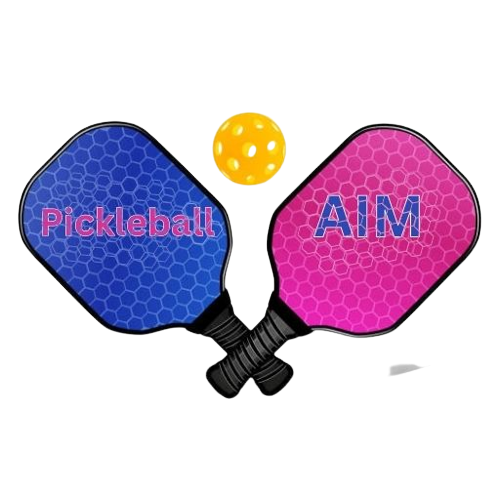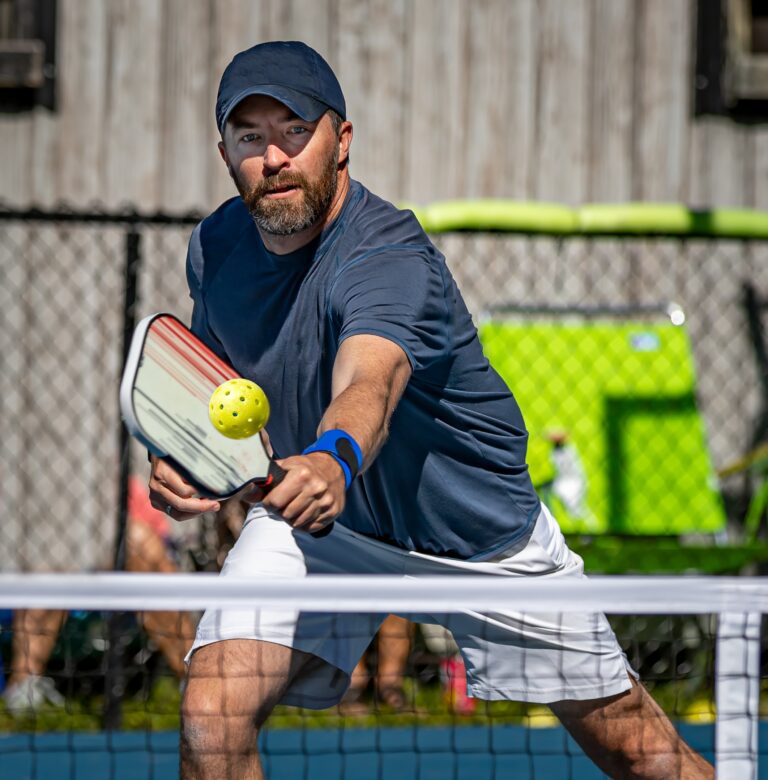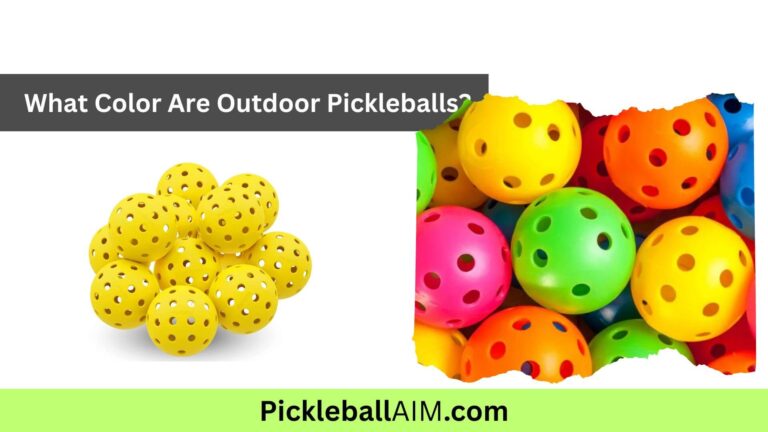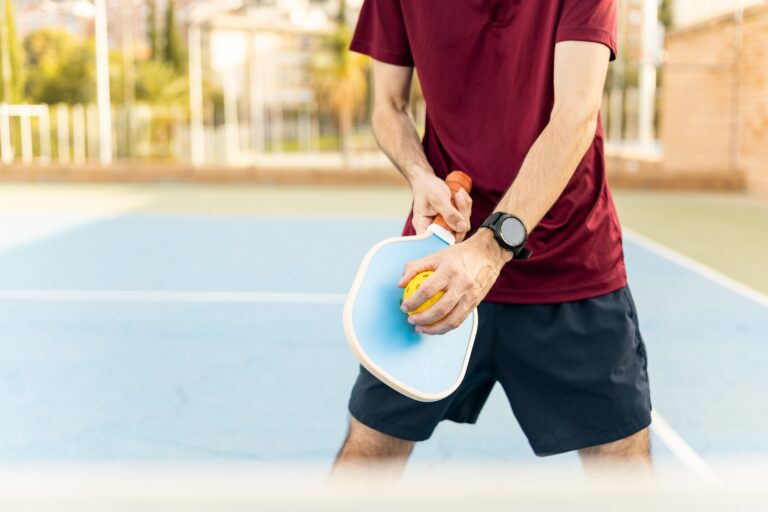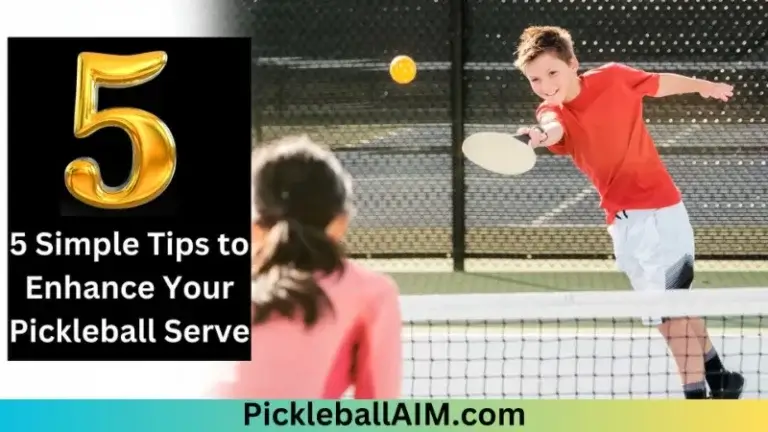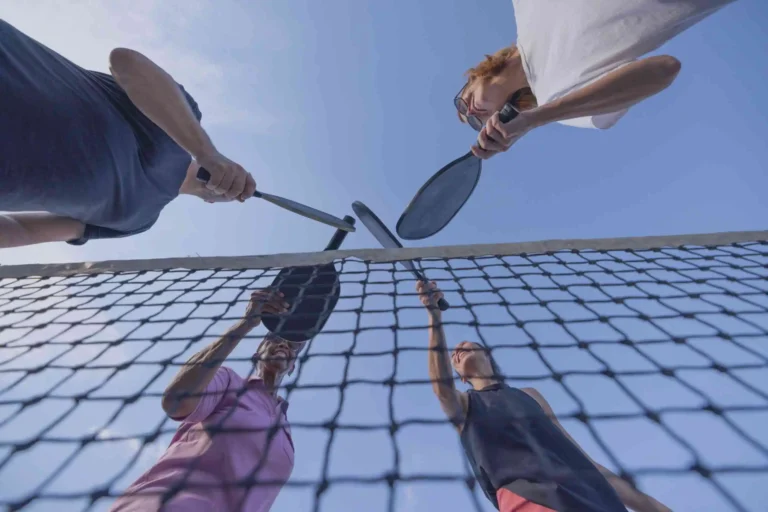5 Pickleball Tactics to Instantly Improve Your Game
Introduction and Pickleball Tactics
Pickleball, the fast-paced and addictive sport that combines elements of tennis, badminton, and ping pong, has been sweeping across courts worldwide. Whether you’re a novice or a seasoned player, mastering the tactical aspects of pickleball can take your game to the next level. In this article, we’ll explore five pickleball tactics that can instantly improve your gameplay and give you the edge on the court.
1. The Dink Game: Precision Over Power
One of the most critical tactics in pickleball is the dink game. A dink is a softly executed shot that arcs over the net, landing in the no-volley zone (the “kitchen”). The key here is precision, not power. By consistently placing dinks near the kitchen line, you force your opponents into a difficult position, limiting their ability to attack. This tactic can slow down the pace of the game, allowing you to control the rally and dictate the tempo.
Mastering the Dink
The dink game in pickleball requires finesse and precision. Here’s how to master this essential tactic:
- Control the Angle: When executing a dink, focus on the angle of your shot. Aim for a shallow trajectory that barely clears the net and lands softly in the kitchen. This minimizes your opponent’s reaction time.
- Change Up Your Placement: Don’t be predictable with your dinks. Vary the placement of your shots along the kitchen line, forcing your opponents to move and adapt. This unpredictability can create openings in their defense.
- Pace and Spin: Experiment with the pace and spin of your dinks. Occasionally, adding a touch of topspin or backspin can make your shots even more challenging to return.
The Mental Aspect of Dinking
Dinking isn’t just about technique; it’s also a mental game. Here’s how to gain a psychological edge:
- Patience is Key: Embrace the patience that the dink game demands. Resist the temptation to go for a power shot prematurely. Wait for the right opportunity to strike.
- Watch Your Opponents: Pay attention to your opponents’ body language and positioning. Look for signs of frustration or impatience, as this can indicate that your dinking strategy is working.
- Maintain Composure: Stay calm and composed during dinking rallies. Avoid getting flustered if your opponents return your shots effectively. Trust in your strategy and keep the pressure on.
2. Effective Use of the Third Shot Drop
The third shot in pickleball is often the most critical. After the serve and the return, it sets the tone for the rally. Instead of slamming the ball hard, consider using a drop shot. A well-executed third-shot drop softly lands in the kitchen, making it challenging for your opponents to respond with a powerful attack. This tactic not only keeps you in control but also reduces the risk of making unforced errors.
Mastering the Third Shot Drop
The third-shot drop is a game-changer when executed correctly. Here’s how to perfect this crucial technique:
- Controlled Power: Focus on controlled power rather than a full swing. Gently accelerate your paddle through the ball to generate enough force to clear the net and land in the kitchen.
- Arc and Height: Aim for an arcing trajectory that clears the net by a comfortable margin. The height of your shot can be deceptive, making it challenging for opponents to gauge the ball’s landing point.
- Consistency: Consistency is key with the third-shot drop. Practice it repeatedly to ensure that you can execute this shot reliably under pressure.
Dictating Play with the Third Shot
The third shot drop can give you a strategic advantage. Here’s how to use it to control the flow of the game:
- Create Opportunities: The third-shot drop can create opportunities for your team. As your opponents return the drop, be prepared to capitalize on any weak or high responses with an aggressive shot.
- Force Errors: The softness and placement of the third-shot drop can force your opponents into making mistakes. They may attempt overly aggressive returns or struggle to handle the ball’s soft touch.
- Change the Momentum: The third-shot drop can shift the momentum of the game. By controlling the pace and location of your shot, you dictate the terms of engagement and keep your opponents on their toes.
3. The Lob as a Defensive Tool
When you find yourself under pressure near the kitchen line, don’t be afraid to use the lob. A well-timed lob can help reset the rally and give you the opportunity to regain your position on the court. Be sure to practice your lobs to ensure they clear the net and land deep in your opponent’s court, forcing them to move quickly and possibly creating an opening for your next shot.
The Art of Lobbing
Lobbing effectively requires precise execution. Here’s how to use the lob as a defensive tool:
- Elevation Control: Focus on the height and arc of your lob. A lob that goes too high may allow your opponents to reposition themselves, while one that is too low risks hitting the net. Aim for a trajectory that lands the ball deep into your opponent’s court.
- Placement Strategy: Strategically place your lobs to force your opponents into difficult positions. Aim for the corners of the court or areas where your opponents have to cover a longer distance.
- Surprise Element: Lobs work best when they catch your opponents off guard. Use them sparingly to maintain their element of surprise.
Resetting the Rally
The lob can be a game-changer when you need to reset the rally. Here’s how to use it strategically:
- Regain Position: If you and your partner find yourselves out of position or on the defensive, a well-placed lob can buy you the time needed to return to an advantageous court position.
- Break Momentum: Lobs can disrupt your opponents’ rhythm and break their offensive momentum. This can lead to errors or give you the opportunity to regain control of the rally.
- Creating Opportunities: After a successful lob, be prepared to capitalize on the opportunities it presents. If your opponents respond with a weak or high shot, use your next shot to take control of the point.
4. The Poach: Surprise Your Opponents
Pickleball is not just about individual skills; it’s also about teamwork, especially in doubles. The poach is a tactical move where one player unexpectedly intercepts a ball that appears to be heading to their partner. This element of surprise can catch your opponents off guard, disrupt their rhythm, and create opportunities for quick points. Effective communication with your partner is essential for successful poaching.
The Art of Poaching
Poaching effectively involves timing, anticipation, and communication with your partner. Here’s how to execute this tactic:
- Timing is Everything: Poaching requires impeccable timing. Be ready to move as your opponent makes contact with the ball. Your goal is to intercept the ball before it reaches your partner.
- Anticipate Your Opponent: Study your opponents’ patterns and tendencies. Anticipate their shots and be prepared to poach when you foresee an opportunity.
- Communication: Clear communication with your partner is essential. Let them know when you intend to poach to avoid confusion and ensure seamless teamwork.
The Psychological Advantage
Poaching is not just about winning points; it’s about gaining a psychological edge. Here’s how poaching can affect the mental aspect of the game:
- Frustration Factor: Successful poaching can frustrate your opponents, causing them to second-guess their shots and become more tentative.
- Uncertainty: The threat of a poach can inject uncertainty into your opponents’ game. They may become hesitant, leading to errors and missed opportunities.
- Team Morale: Poaching can boost your team’s morale and confidence. It demonstrates your proactive approach and your willingness to seize control of the game.
5. The Split-Step: Improve Your Court Coverage
Movement is a fundamental aspect of pickleball, and the split-step is a critical technique for covering the court efficiently. The split-step involves jumping slightly and
The Split-Step Technique
The split-step is a game-changing technique in pickleball that enhances your court coverage and reaction time. Here’s how to master this crucial move:
- Timing is Everything: The split-step should be perfectly timed. As your opponent prepares to strike the ball, jump slightly, spreading your feet apart, and land on the balls of your feet. This balanced and agile stance allows you to move swiftly in any direction.
- Stay Relaxed: Maintain a relaxed posture during the split-step. Tension in your legs or body can hinder your mobility and quick reactions. Keep your knees slightly bent and your weight centered.
- Anticipate the Shot: Use the split-step to anticipate your opponent’s shot. It allows you to read their intentions and react faster, whether you need to move forward, backward, or sideways.
Coverage and Defensive Capabilities
The split-step isn’t just about agility; it significantly enhances your overall court coverage and defensive capabilities:
- Reacting to Shots: With the split-step, you’re always ready to react. Whether it’s a fast-paced volley or a delicate drop shot, your split-step sets the stage for a rapid response.
- Positioning is Key: The split-step helps you maintain optimal court positioning. You can quickly adjust to cover open areas, protect the sidelines, and move closer to the net when necessary.
- Minimize Unforced Errors: By improving your court coverage and defensive capabilities, the split-step reduces unforced errors. You’ll find yourself reaching more balls, putting your opponents under pressure, and extending rallies.
Conclusion
Mastering these five pickleball tactics can elevate your game to new heights. Whether you’re playing for fun or competing at a high level, incorporating precision dinking, effective third-shot drops, well-timed lobs, strategic poaching, and the agile split-step into your gameplay will give you a significant advantage on the court.
Remember, pickleball is not just about power; it’s about strategy, finesse, and teamwork. Continuously practicing and refining these tactics will not only make you a formidable opponent but also deepen your appreciation for the intricacies of this exciting sport.
So, the next time you step onto the pickleball court, put these tactics into action. Embrace the mental challenge, adapt your gameplay, and surprise your opponents with your newfound strategic prowess. As you do, you’ll discover that pickleball is not just a sport but a thrilling and cerebral battle of wits and skills.
